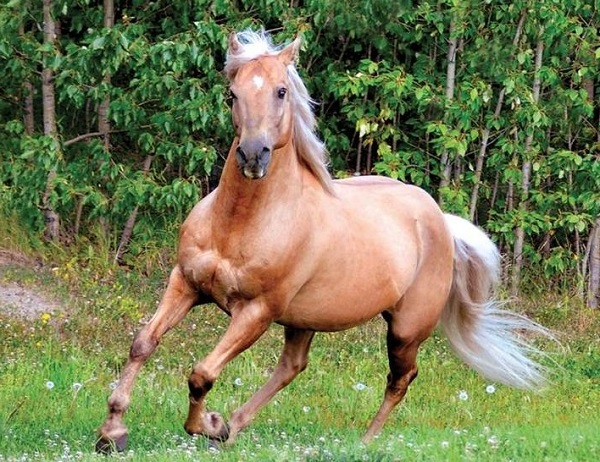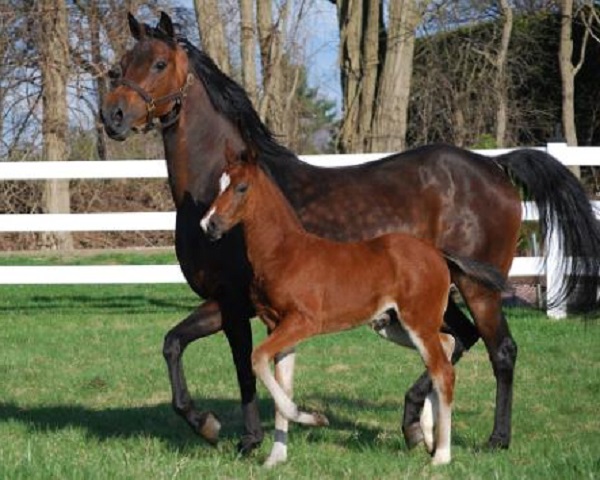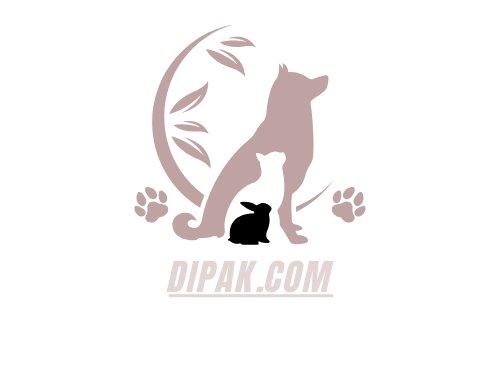Explore the fascinating world of the Morgan horse through the article “Morgan Horse: Breed Profile, Training, Grooming Tips.” Renowned for its versatility and amiability, this hourse is often referred to as “the horse that chooses its owner.” With a high level of cooperation and a strong desire to please humans, the Morgan is an easily trainable and adaptable horse in various situations. This article delves into the origin and characteristics of this breed while providing valuable training and grooming tips to enhance your journey in caring for your Morgan horse.

The Morgan horse’s origins and history
The origins and history of the Morgan horse trace back to the late 1700s in the United States, marking it as one of the country’s earliest developed horse breeds. The foundation of this esteemed breed lies in a stallion named Figure, owned by Vermont schoolteacher Justin Morgan. Although Figure’s precise pedigree remains a mystery, it is widely accepted that he inherited a blend of Arabian, Thoroughbred, and possibly Welsh Cob or Friesian bloodlines.
Despite standing at a relatively modest height of approximately 14 hands (56 inches), Figure garnered attention for his compact stature, athleticism, and amiable disposition. His reputation soared as word spread across New England about his remarkable ability to out-pull and out-distance many other horses, making him a highly sought-after stallion for breeding purposes.
Figure passed down his exceptional traits to his offspring, and in honor of his owner, the breed eventually became known as the Morgan horse. Over time, the Morgan horse solidified its reputation as the ultimate all-purpose horse, excelling in harness, under saddle, on the racetrack, and in agricultural work. Furthermore, its genetic influence extended beyond its own breed, shaping the bloodlines of various other horse breeds, including the Canadian, Saddlebred, Tennessee Walking Horse, American Standardbred, and American Quarter Horse.
To preserve and document the rich heritage of the Morgan horse, the American Morgan Horse Association was established in 1909 as the official breed registry. This organization plays a crucial role in maintaining the historical significance and integrity of the Morgan horse breed.
Features of Morgan horses

Morgans are evaluated consistently based on a common breed standard, even though they may participate in a variety of equestrian activities. Because of this, Morgans have retained their unique characteristics and amiable dispositions over many generations, which are still clearly visible in the horse today.
Appearance
The Morgan horse boasts a distinctive appearance characterized by a harmonious blend of elegance and practical muscularity. These horses, which are usually between 14.1 and 15.2 hands tall, have elegant features that have been preserved over many generations.
A perfect Morgan has an expressive head with large eyes, a wide forehead, and a straight or slightly rounded face. Firm lips, big nostrils, and well-rounded jowls are prominent facial features that are contrasted with small, slender ears that are widely spaced. Compared to other breeds, this one has a slightly deeper throatlatch, which promotes flexibility and healthy breathing.
Morgan have an upright neck set on a well-angled shoulder with a slight arch and a noticeably longer topline. Morgans have compact bodies with deep flanks, wide loins, short backs, well-sprung ribs, and powerful chests. Long, level, and well-rounded croups are paired with a characteristically high tail carriage.
Short cannons and comparatively long forearms are further characteristics that contribute to a proportionate physique. The front legs are positioned further front on the torso due to the deep angulation of the shoulders, which gives the body a strong, powerful appearance while yet keeping it balanced and nimble overall. Morgans have a remarkable appearance that embodies their beauty and practicality.
Temperament
Morgan horses are known for their remarkable temperament, combining good-naturedness, intelligence, willingness, and a strong work ethic. Morgan horses are well-known for being a loving and brave breed that make excellent first horses.
Owners value the endurance, vigor, and lively nature of their pets, which combine with a positive outlook and excellent trainability to make Morgans unique. A dependable and adaptable temperament have been formed in horses by generations of selective breeding, which has made them naturally willing to please. Because of their versatility, Morgans are valued partners for riders of all skill levels and succeed in a wide range of activities.
Colours
Contemporary Morgan horses come in a variety of hues, including unusual tones like buckskin and palomino. Rarer than others, pintos are also acceptable. Bay, black, and chestnut are the most common hues for Morgans; other colors include gray, cremello, perlino, smoky cream, silver dapple, and overo.
The American Morgan Horse Association (AMHA) provides coat color verification tests in order to accurately identify and validate coat colors. These studies address a range of genetic variables that contribute to distinct coat variations:
- Agouti Test and Red Factor: Relevant for Black and Chestnut coats.
- Cream Dilution Test: Including Perlino, Buckskin, Palomino, Smoky Black, and Smoky Cream.
- Silver Test: Targeting the Silver Dapple coat.
- Gray Test: Identifying the presence of the Gray coat.
- Splash Test: For horses with the Overo pattern.
Disciplines
Because they can accommodate a variety of equestrian disciplines, Morgan horses are highly valued for their adaptable gaits. Some Morgans can foxtrot, rack, or pace, however they are not usually multi-gaited.
Morgans are well-liked pleasure horses for riders of all skill levels because of their wonderful nature. They participate in show arenas with both English and Western tack, excelling in harness contests.
Morgans often perform wonderfully in dressage and show jumping at lesser levels at the Morgan-only events held around the United States by the American Morgan Horse Association (AMHA). They are versatile enough to perform saddle seat competitions, hunter events, equitation, and stock work. In addition, owners love trail riding and compete in endurance races. Because of its adaptability, the Morgan is a beloved partner for many different types of horseback riding.
Longevity of Morgan horses

When given the right care, Morgan horses—like the well-known stallion Figure, who lived to be 32 years old—often have long and robust lives. Many elderly Morgans continue to prosper well into their 30s. Their propensity for metabolic illnesses is the main issue for their lifespan, however hereditary diseases are taken into account. Morgan horses need careful management and care to be healthy for a long time.
Taking care of Morgan horses
Providing Morgan horses with wholesome necessities including secure shelter, frequent grooming, exercise, and social contact is part of their care. Adhere to a yearly schedule for vaccines, deworming, and dental examinations. While consistent attendance is crucial, use caution in springtime when there are abundant pastures to avoid pasture laminitis. Exercise helps Morgans maintain a healthy weight and strong bones. Morgans are noted for their ability to ride lightly without becoming too energetic. Thorough maintenance guarantees the general health of these adaptable and durable horse friends.
Grooming
Following accepted equestrian care procedures is necessary for maintaining Morgan horse grooming. At least once or twice a week, brush and comb the coat to get rid of dirt, debris, and tangles. To avoid matting, pay close attention to the thick mane and tail. It is essential to examine the hooves every day to make sure they are clean and to look for any indications of damage, illness, or dirt. Regular grooming procedures keep Morgan horses happy and well-groomed while also improving their look and overall health.
Diet and Nutrition
Due to their nature as easy keepers, Morgan horses typically require less food compared to many other full-size horse breeds. A balanced diet comprising quality grass, hay, and grains is sufficient. However, caution should be exercised to avoid overfeeding, particularly with sweet foods, as Morgans are prone to obesity. Limiting the horse’s intake to meet its specific nutritional needs is essential for maintaining a healthy body condition.
Morgan horses’ health issues
Morgan horses, though generally robust, are susceptible to specific health issues, primarily metabolic disorders like Equine Metabolic Syndrome (EMS) and Polysaccharide Storage Myopathy (PSSM). EMS, linked to insulin resistance and a heightened risk of laminitis, requires a controlled diet and weight management. Genetic factors significantly influence the risk, with a heritability as high as 80%.
PSSM, a genetic disorder with a relatively low prevalence in Morgans, may cause symptoms such as muscle soreness and tying up. Diagnosis involves genetic testing for PSSM1, while PSSM2 requires a muscle biopsy. Owners should be vigilant, recognizing signs of obesity versus the breed’s natural muscularity. Regular veterinary consultation is essential for the overall health and well-being of Morgan horses.
Ways to Purchase or Adopt a Morgan Horse

Depending on age, health, training, and lineage, buying a Morgan horse may be expensive, with typical prices ranging from $1,000 to $5,000. All across the United States, you may find Morgans for adoption or purchase; Vermont is a major center since it is the origin of the horse.
If you are thinking about buying a Morgan, you should get to know the horse first. Ask questions about the history, health, temperament, and training of the horse from the breeder or rescue group. Ask to see the horse being trained if at all feasible. Before committing, make sure all questions are answered completely. A veterinarian’s pre-purchase or pre-adoption examination is strongly advised in order to further determine the horse’s compatibility. Making an educated choice when adopting a Morgan horse is ensured by this thorough process.
Conclusion
The Morgan horse stands out for its affable nature and versatile adaptability. With impressive roots traced back to the founding stallion Figure, this breed not only boasts a visually appealing appearance but also proves to be an ideal partner for equestrians at all levels. The article underscores the importance of proper care and training, emphasizing the need to understand underlying health issues. To sum up, the Morgan is not just a beautiful horse breed; it is a reliable and multifaceted companion in the equestrian world.
